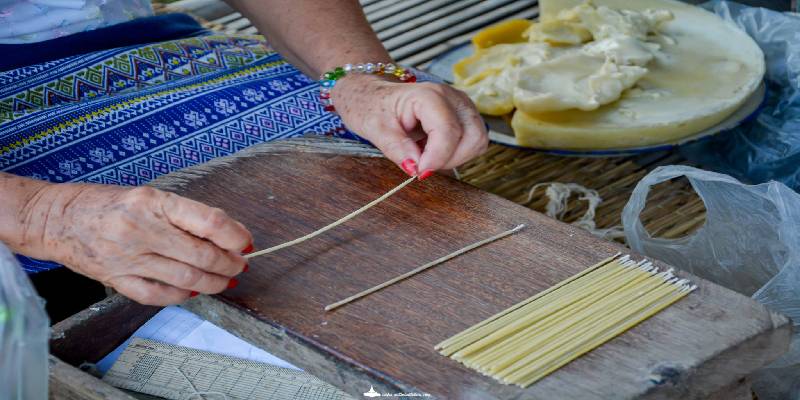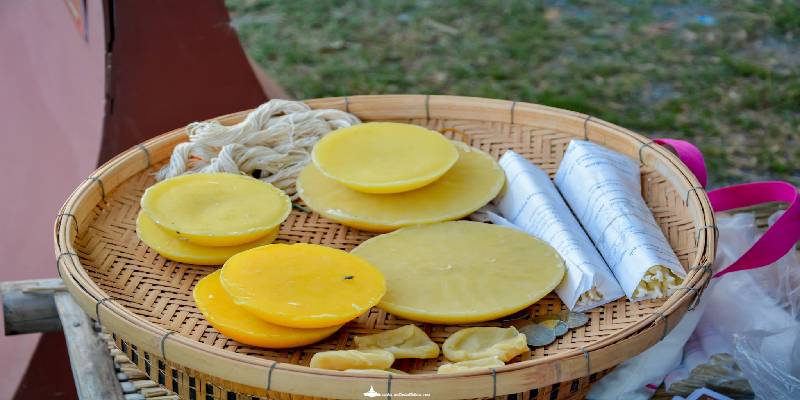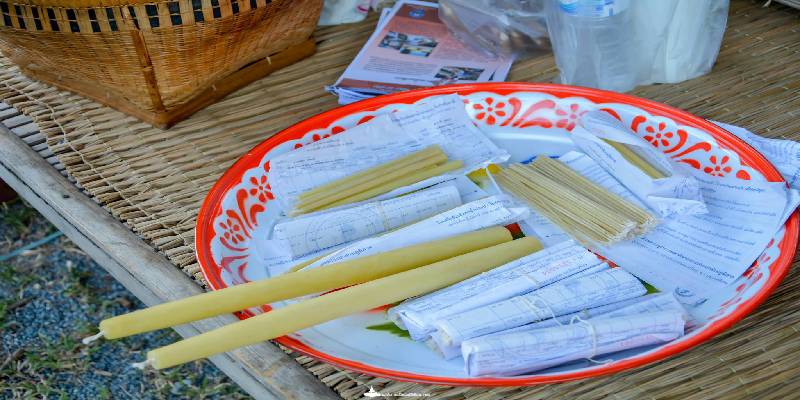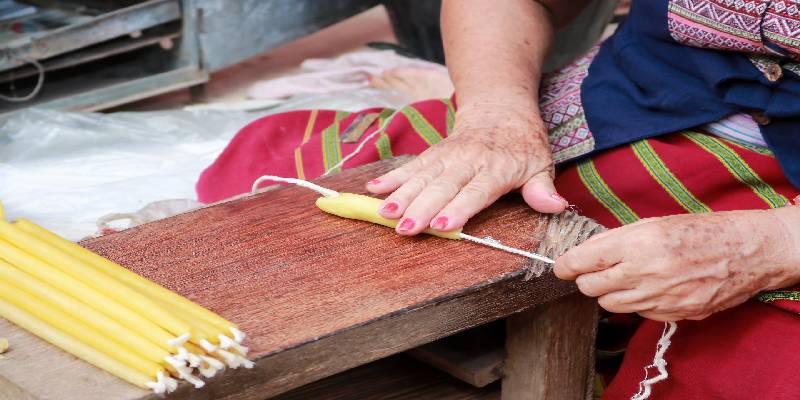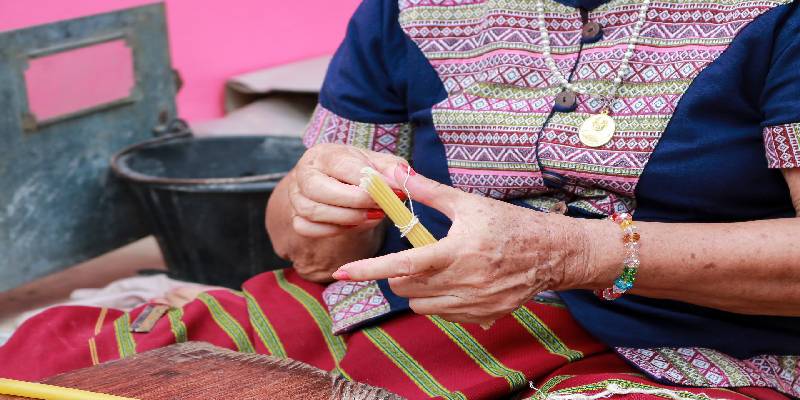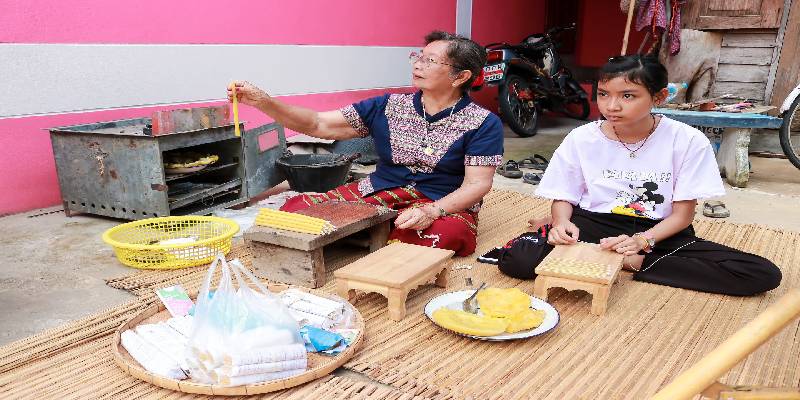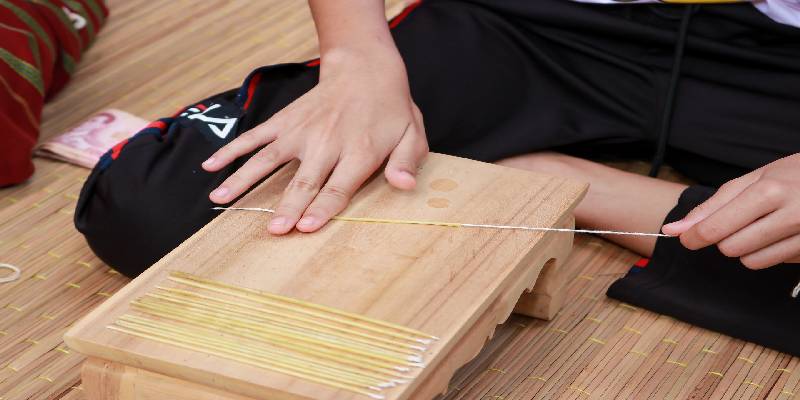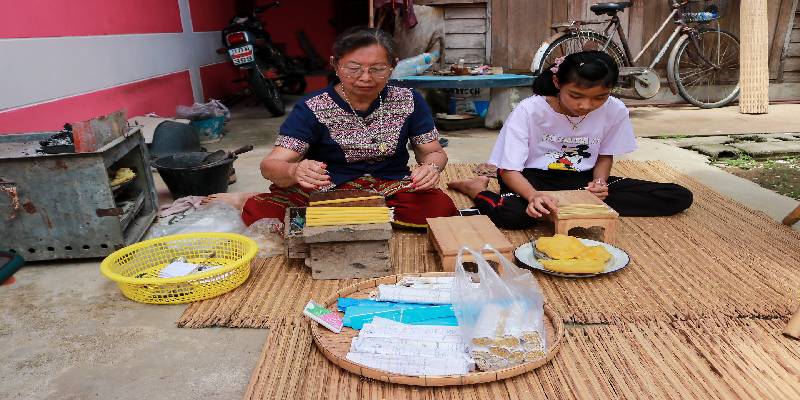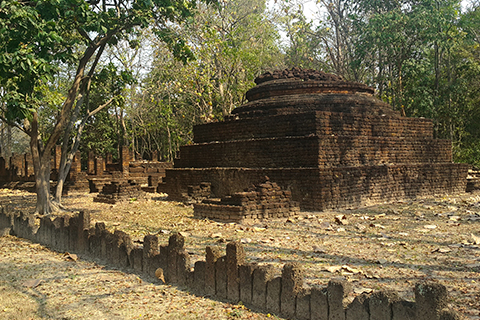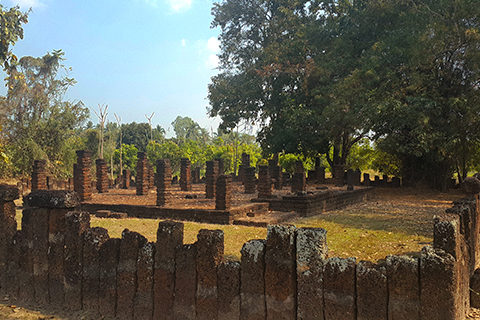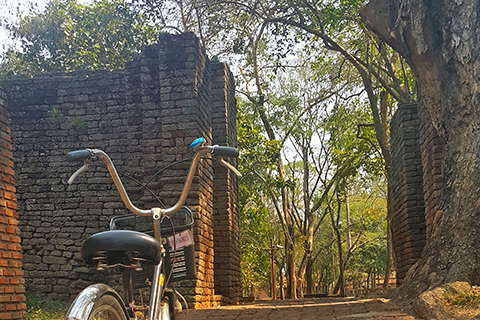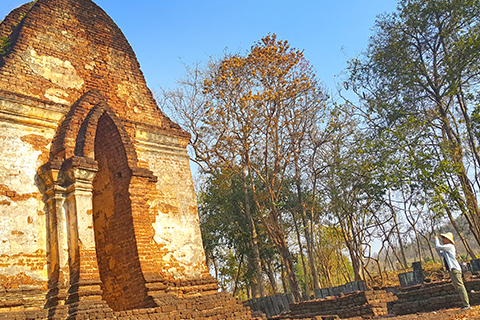The Local Wisdom of Candle Making House
(Arts & Culture , Si Satchanalai, Sukhothai)
The craft of candle-making holds significant historical importance, particularly during the era when Sukhothai was the capital city, 700 years ago. At that time, natural methods were employed to provide light due to limited transportation and the absence of electricity in households. This tradition, rooted in a way of life closely connected to nature, represents a repository of accumulated wisdom that has been passed down through generations.
Ms. Sombun Khosaprasit, a 76-year-old custodian of candle-making knowledge, shares insights into this ancient craft, which she inherited from her parents. Ms. Khosaprasit recounts her early experiences, involving the collection of beehives for the production of candles in 1944 when she would carefully select and process the beeswax in a precise manner to create high-quality candles with light yellow coloring.
The candle-making process commences by heating the molded candle until it reaches a soft consistency. A flame is then ignited above the candle, while the bottom is positioned to receive the heat from the upper part of the stove. Once the candle becomes soft, it is weighed on a "Krateng" (candle/gold scale) to ascertain a weight equivalent to 1 baht, which amounts to 15.2 grams in comparison to gold. Weighing the candle aids in determining the proportions for molding each candle. For instance, standard candle-making employs a 1-baht candle, currently priced at 15 baht per candle. However, crafting special candles, such as those used for the worship of King Lithai Monument, entails using a 5-baht candle to craft one candle. If producing candles for listening to sermons, they will be sold in batches of 100 for 130 baht. Prior to molding a candle, it is necessary to determine the desired size of the candle to be crafted. Placing the wick in a straight line, the softened candle is positioned onto the wick, and then carefully rolled to encase the wick until the desired length is achieved. Subsequently, the candle is evenly shaped by hand, and the excess wick is trimmed, signifying the completion of the candle-making process.
Although sourcing beehives in her local area has become challenging, prompting her to secure them from other regions at an expense of 300 baht per kilogram, Ms. Khosaprasit maintains her dedication to this revered tradition. The joy she derives from witnessing the continuation of candle weaving by others is evident, and she takes great pride in using her expertise to produce candles for significant cultural and spiritual ceremonies.
Ms. Sombun Khosaprasit, a 76-year-old custodian of candle-making knowledge, shares insights into this ancient craft, which she inherited from her parents. Ms. Khosaprasit recounts her early experiences, involving the collection of beehives for the production of candles in 1944 when she would carefully select and process the beeswax in a precise manner to create high-quality candles with light yellow coloring.
The candle-making process commences by heating the molded candle until it reaches a soft consistency. A flame is then ignited above the candle, while the bottom is positioned to receive the heat from the upper part of the stove. Once the candle becomes soft, it is weighed on a "Krateng" (candle/gold scale) to ascertain a weight equivalent to 1 baht, which amounts to 15.2 grams in comparison to gold. Weighing the candle aids in determining the proportions for molding each candle. For instance, standard candle-making employs a 1-baht candle, currently priced at 15 baht per candle. However, crafting special candles, such as those used for the worship of King Lithai Monument, entails using a 5-baht candle to craft one candle. If producing candles for listening to sermons, they will be sold in batches of 100 for 130 baht. Prior to molding a candle, it is necessary to determine the desired size of the candle to be crafted. Placing the wick in a straight line, the softened candle is positioned onto the wick, and then carefully rolled to encase the wick until the desired length is achieved. Subsequently, the candle is evenly shaped by hand, and the excess wick is trimmed, signifying the completion of the candle-making process.
Although sourcing beehives in her local area has become challenging, prompting her to secure them from other regions at an expense of 300 baht per kilogram, Ms. Khosaprasit maintains her dedication to this revered tradition. The joy she derives from witnessing the continuation of candle weaving by others is evident, and she takes great pride in using her expertise to produce candles for significant cultural and spiritual ceremonies.
